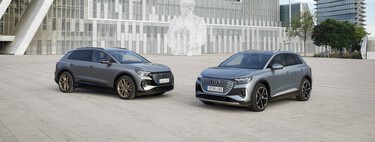Believing that a vehicle is neutral in carbon emissions is, practically, a matter of faith right now. To solve it, a consortium of eleven companies, including BMW and Audi, will develop the Battery Passport, which will show the carbon footprint of the same in an electric car.
The consortium is supported by the German Government and can define a new environmental label that is confirmed with the future EU Battery Regulation. This last project already has its own proposals on the table that are contemplated in this Battery Passport.
The Battery Regulation and your passport
To improve the traceability of products and to know the carbon footprint they have left during their production, the European Union is developing its own regulation that includes this information for the user and that he is aware of the pollution generated. Among the proposals on the table, the European Commission wants all batteries manufactured from January 1, 2027 to show information on the amount of Recycled material that has been used.
The requirements will tighten from 2030. Although it has yet to be approved, the intention is that from this date, all batteries contain a minimum of 12 pieces of recycled cobalt, 85 pieces of lead, 4 pieces of lithium and 4 nickel parts. By 2035, this would increase to 20% cobalt, 10% lithium and 12% nickel.
To ensure that these requirements are met, the German government has supported a German consortium with €8.2 million to develop an environmental label for batteries, in a three-year project. Companies such as BMW and Audi are involved in it and they will have the company Circulor as the one in charge of providing the technical requirements to demonstrate the information collected to consumers.
With a QR code it will be possible to show which components are part of the battery and what percentage of them have been recycled. In addition, from 2024, all rechargeable electric vehicles, light transport and industrial batteries sold in the European Union will be required to make their carbon footprint public.
The Global Battery Alliance is also linked to this project, a much larger project, which also includes automobile firms such as the Renault Group or the Volkswagen Group, which have long been studying ways to reduce the pollution generated for each battery and recycle most of the components.
The carbon footprint of the electric car
The trace of greenhouse gases that any person leaves behind when they buy a product, recharge their mobile phone or turn on the oven in their home is what is known as their carbon footprint. It involves the energy produced to put what is being used in motion, but also the means that have been necessary for its production and transfer to your home.
In other words, in an electric car, the carbon footprint reflects the polluting emissions generated to produce the chassis and any other component of it (including its battery). To this must be added its transfer until delivery to the customer and the use made of it by the latter. Even the subsequent recycling of the parts.
BMW already ensures that its BMW iX and BMW i4 are carbon neutral during production. The same thing happens with the Volkswagen ID.3. But then you have to know what kind of energy drives these vehicles. It is not the same whether electricity comes from clean sources or from burning coal. And, despite everything, Bloomberg NEF pointed out that with this last option, the electric car was still less polluting than a combustion car.
Volvo also presented its own report in which it claimed that producing a C40 Recharge (electric) emitted 70% more polluting emissions than a combustion XC40. However, once running, it hardly needed 49,000 kilometers to make up this difference if electricity exclusively obtained from clean energy sources was used. With the European mix, the compensation reached 77,000 kilometers and taking the world mix as a reference, it was necessary to travel 110,000 kilometers for the electric car to start being less polluting than a combustion car.
George is Digismak’s reported cum editor with 13 years of experience in Journalism
